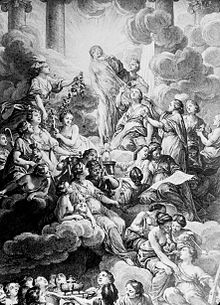记录美好
记录感动过我的文学,影视作品Diderot (狄德罗,法国)的Encyclopédie(百科全书, 1751-1772)
继续Vejas Gabriel Liulevicius' 的The Turning Point of Modern History
https://www.thegreatcourses.
30分钟的精彩讲解有几个细节印象深刻。
Diderot's Encyclopédie (1751-1772), a French encyclopedia.
Continuing from Vejas Gabriel Liulevicius' "The Turning Point of Modern History."
The 30-minute lecture left a lasting impression with several key details.
300年前明朝永乐皇帝要求编纂永乐大典,其于1403年开始,
Diderot和写作者的目的是将知识传播给民众,
300 years ago, during the Ming Dynasty, Emperor Yongle commissioned the compilation of the Yongle Encyclopedia, which began in 1403 and was completed in 1408. However, the general public did not benefit from it. One reason was that the printing technology of the time was insufficient to produce copies on a large scale at a low cost. Moreover, it was a top-down project, even though it did help preserve the writings of that era.
Diderot and the authors of the Encyclopédie aimed to disseminate knowledge to the public, encouraging people to think for themselves, rather than letting knowledge be the exclusive domain of the clergy. Gutenberg's (Germany) commercially viable printing technology, which he had been experimenting with in France, as early as 1454, enabled the rapid and widespread dissemination of this encyclopedia.

[Encyclopédie (1772) 封面摘录。由查尔斯-尼古拉·科赞(Charles-Nicolas Cochin)绘制,由博纳文图尔·路易斯·普雷沃斯特(Bonaventure-Louis Prévost)雕刻。这一作品充满象征意义:中央的人物代表真理,周围有明亮的光芒(启蒙运动的核心象征)。右侧的另外两个人物,代表理性和哲学,正在揭示真理的面纱]
[Excerpt from the cover of the Encyclopédie (1772). Illustrated by Charles-Nicolas Cochin and engraved by Bonaventure-Louis Prévost. This work is filled with symbolism: the central figure represents truth, surrounded by a radiant glow (a core symbol of the Enlightenment). Two additional figures on the right represent reason and philosophy, unveiling the veil of truth.]
1751前后的法国,言论思想自由不像我们现在理解的法国。 Diderot编纂的百科全书在启到”启蒙“作用同时,
另一有趣细节是在政府教皇压制导致资金紧张时,
Around 1751, in France, freedom of speech and thought wasn't as we understand it today. Diderot's compilation of the Encyclopedia played an enlightening role while also carefully navigating the constraints of the government and the Pope. The Pope listed it as a banned book, and the French government turned a blind eye to it, as the extensive production (printing) of this book significantly supported the local economy (employment, taxation, etc.).
Another interesting detail is that when government and papal suppression led to financial constraints, the ruler of Russia at the time, Catherine the Great, was eager for knowledge and provided generous assistance. However, like the emperors of China, this knowledge was mostly used by her (perhaps along with her co-rulers) and was not disseminated among the general public as it was in France and neighboring countries.
记录下这些花絮,找时机再细细研读这些历史。Wiki链接在此:
Making a note of these interesting tidbits and trying to find the right time to delve deeper into this history. The Wikipedia link is here: https://en.wikipedia.org/wiki/Encyclop%C3%A9die.




